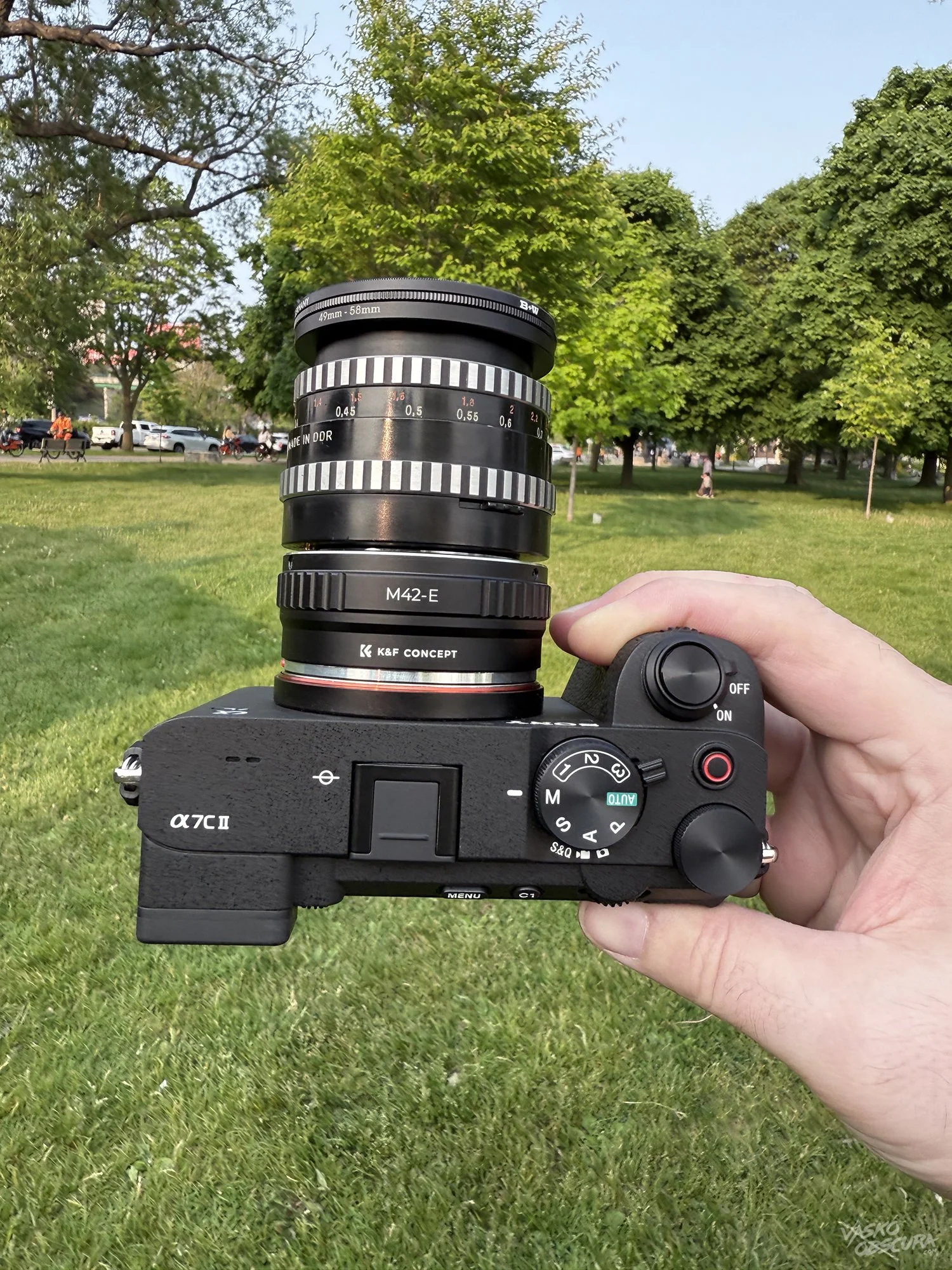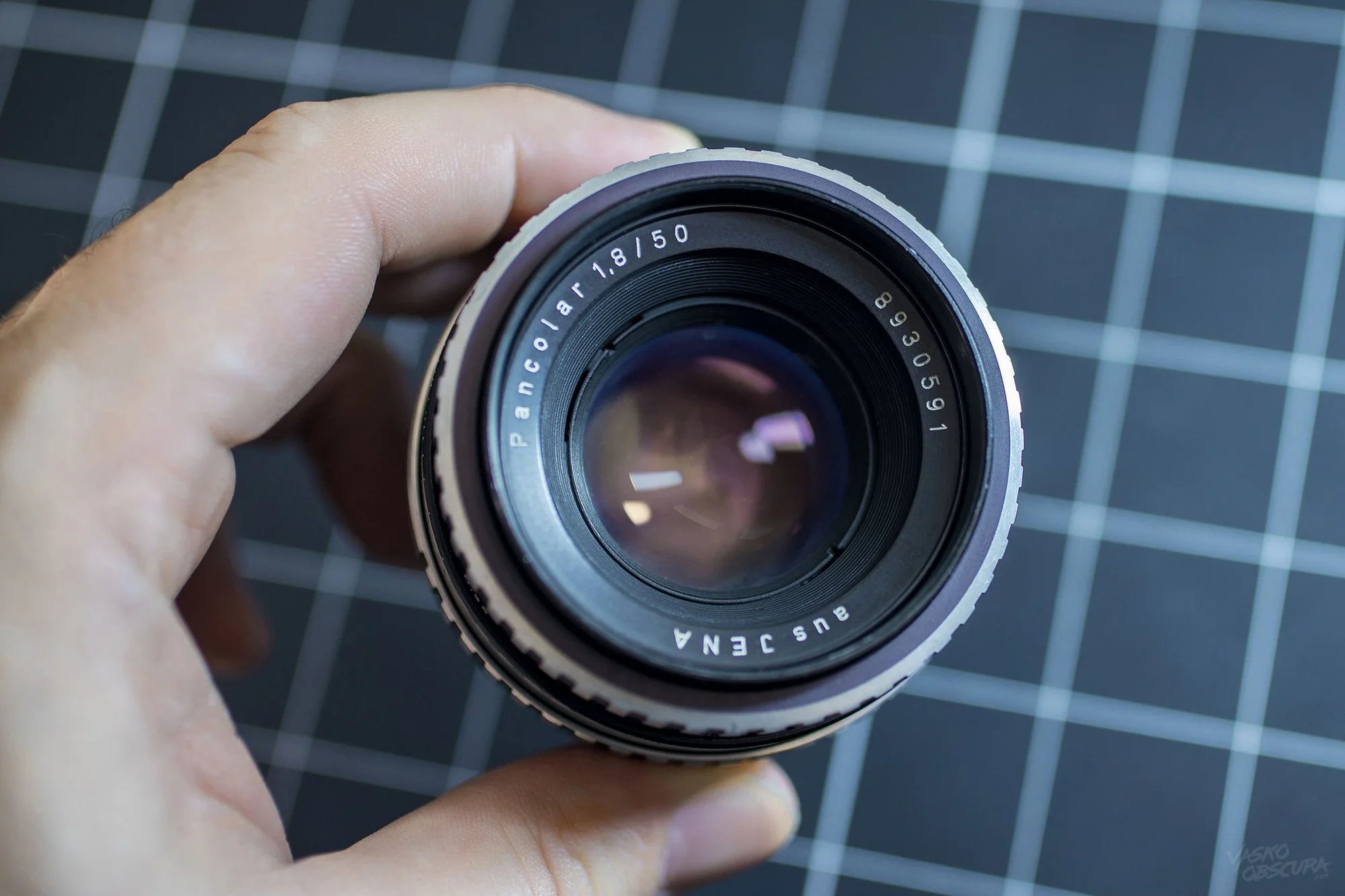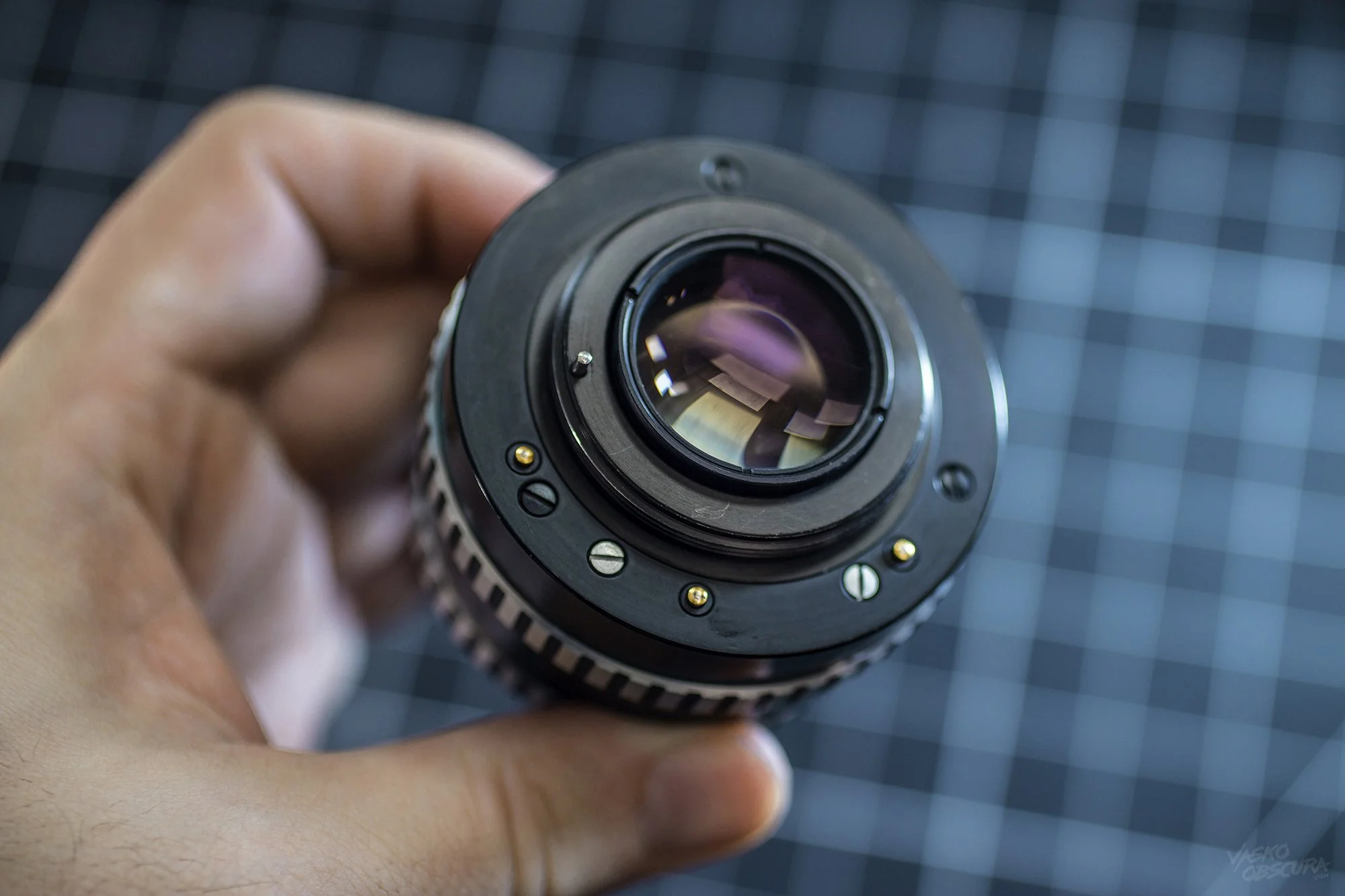Carl Zeiss Jena Pancolar 50mm f1.8 Zebra - Lens Info
Carl Zeiss Jena Pancolar 50mm f1.8 (6 blade version)
Shooting with the Carl Zeiss Jena Pancolar 50mm f/1.8 zebra has been a nostalgic and surprisingly rewarding experience. This lens was manufactured in East Germany at the Carl Zeiss Jena factory, known for producing some of the most respected optics behind the Iron Curtain. There are two main versions of the Pancolar 50mm f/1.8: the earlier model with 8 aperture blades and radioactive thorium glass, and the later version, which I’m using, with a 6-blade aperture and non-radioactive glass. The older version tends to produce a warm yellow cast due to the thorium element, which some photographers find adds a unique character, though it often needs color correction in post or UV treatment to restore proper color. My version skips the thorium but still retains plenty of vintage charm. The newer version was originally released in 1975 and judging by the serial number on my lens it looks like it was manufactured in 1989. If you’re into thoriated lenses I have a few in my collection already. Check the Vintage Lenses page to find them. Regarding coatings, the earlier version often featured single-layer coatings, while the newer versions received improved multi-coating treatments that help control flare and improve contrast, making them more usable in varied lighting conditions. Both versions of this lens feature an all metal housing and glass elements. Honestly speaking it’s nice to use lense that aren’t made of plastic. Just feels better in the hands.
LENS SPECS
Release Date: 1975
Format: 35mm
Mount: M42
Filter: 49mm
Aperture Blades: 6
Aperture Range: 1.8 - 22
Min Focus Distance: 0.35m
Weight 225g
Optical Design: 6 elements in 4 groups
APS-C Conversion Approx.: 80mm
Menu Settings
In order to use this lens on your modern mirrorless camera you’re going to need to do two things. First you’ll need an M42 to (your mount adapter) The second thing you’ll need to do is change your camera menu settings so that it will release the shutter without a lens on the front. Vintage lenses don’t have any electronics that communicate with the camera so the camera sees them as a body cap. You can get more info about it on this blog post: Canon Menu Settings for Shooting With Vintage Lenses
Gear Shots
Optically, both versions share a 6-element in 4-group design that delivers impressive sharpness and beautiful rendering. I was really surprised to see how sharp this lens shoots at f5.6. It could almost pass as a modern lens. Here is the thing, if you are into vintage lenses with lots of imperfections and vintage charm perhaps this is not the lens for you, on the other hand if you are into really well built optical masterpieces from the past this is a nice lens to add to your collection. The 6-blade version produces a distinctive hexagonal bokeh, which can be good or bad depending on personal taste. I personally prefer the softer look of round bokeh balls to I may have to get my hands on the 8 bladed version in the future. One of the things I love most is how easy it is to adapt this M42 mount lens to modern mirrorless cameras. With a simple and inexpensive M42-to-E-mount, or M42-to-RF adapter, depending on your system, you can mount this lens and start shooting instantly, no electronics needed. Focus peaking and magnified live view on mirrorless bodies make manual focusing intuitive and precise. It’s a lens that encourages slow, thoughtful shooting, and every frame feels more deliberate because of it. Whether you're a vintage lens enthusiast or just looking to experiment with character-rich glass, the Pancolar 50mm f/1.8 zebra is a rewarding lens to shoot time with.









